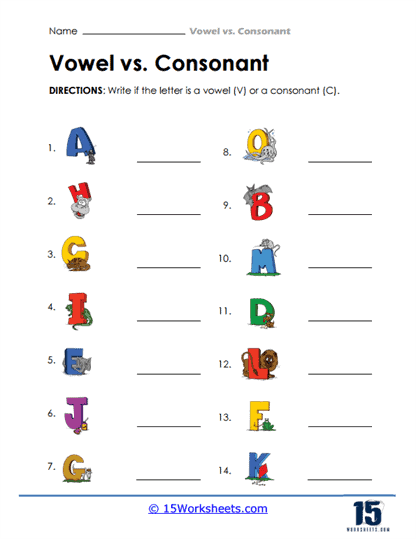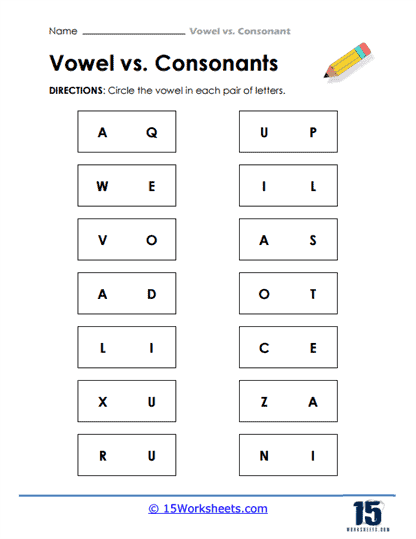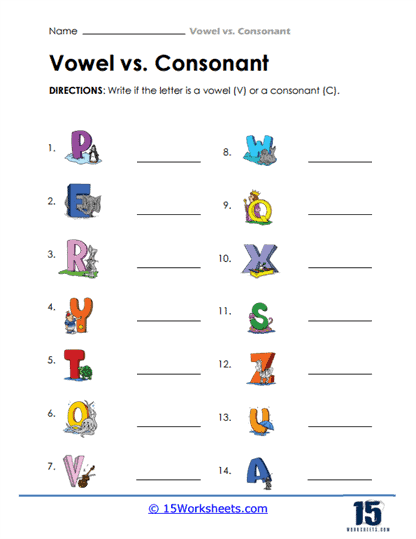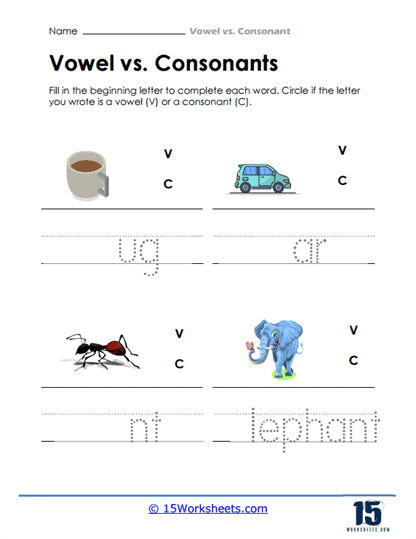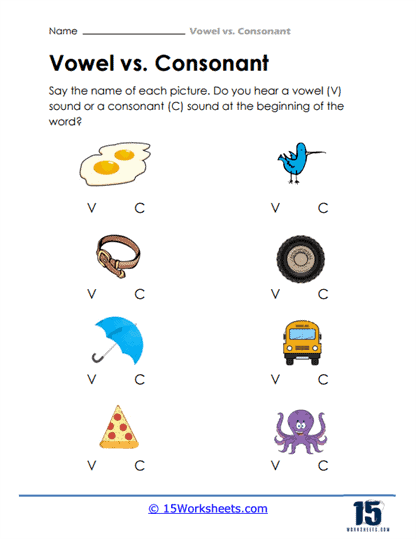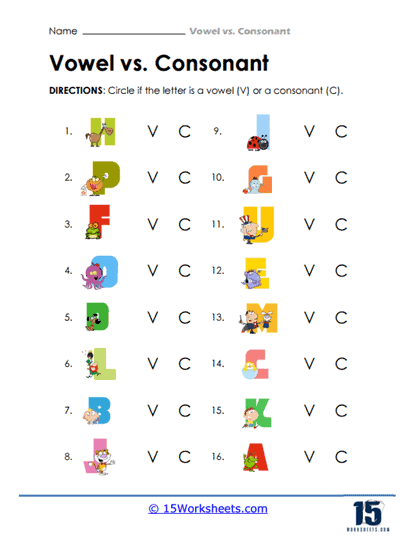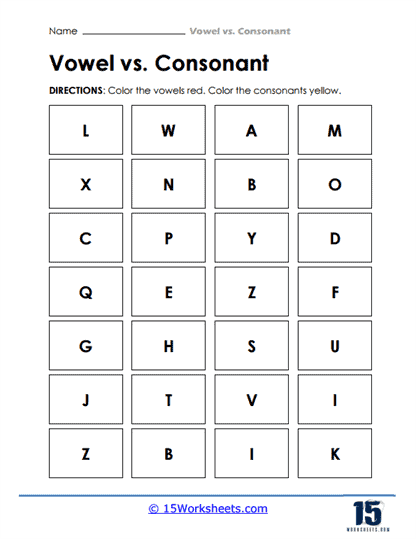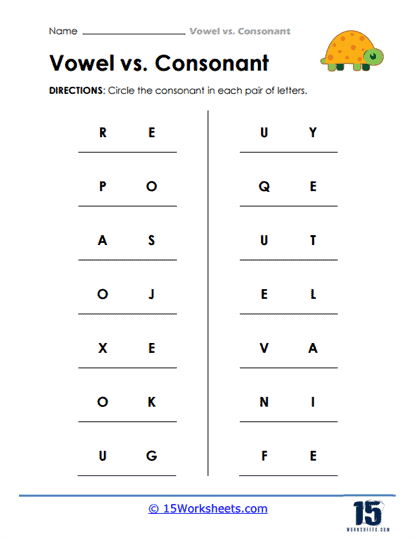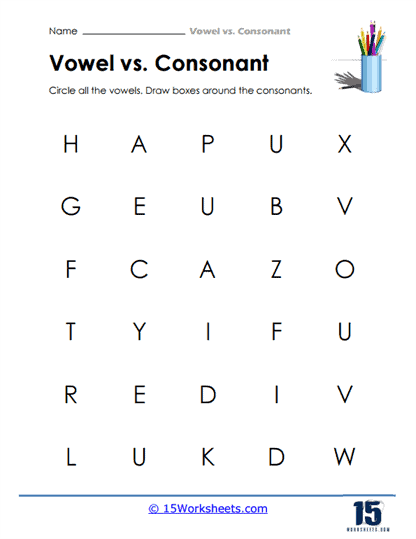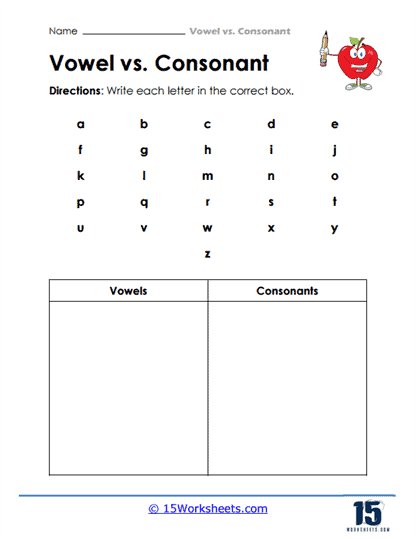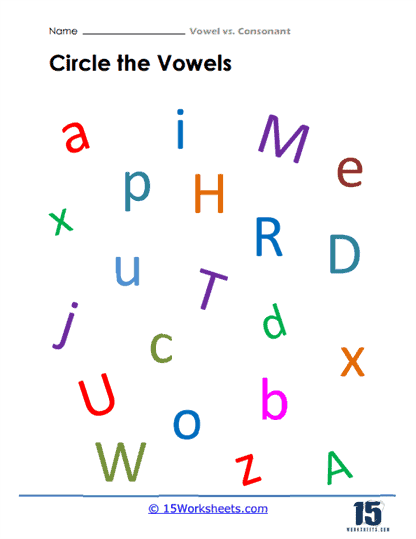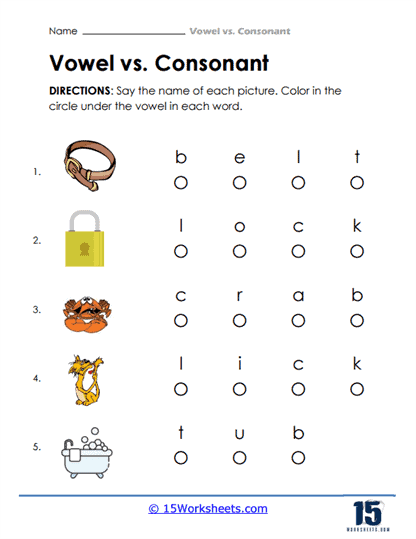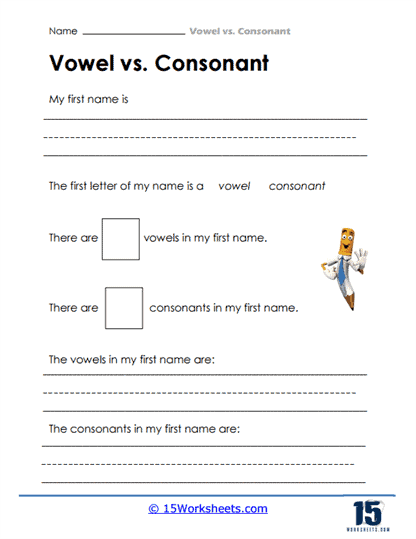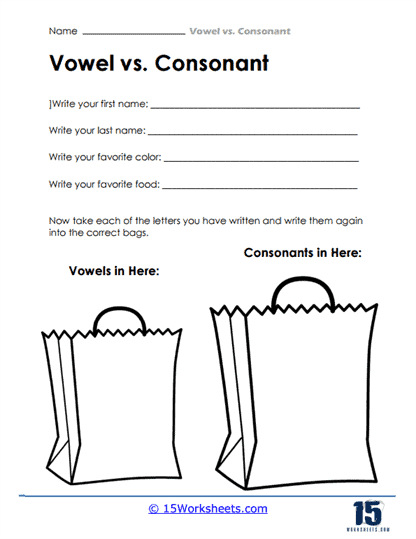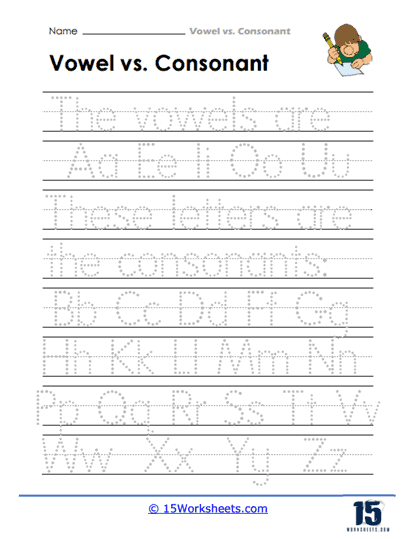Vowels vs. Consonants Worksheets
All About These 15 Worksheets
The distinction between vowels and consonants lies at the very heart of phonics and early literacy education. Understanding and mastering this fundamental concept is essential for young learners as it forms the basis for decoding words, spelling correctly, and developing overall language skills.
To empower students with the foundational knowledge needed to navigate the world of letters and sounds, we proudly present a collection of 15 worksheets titled “Vowels vs. Consonants.” These worksheets are meticulously designed to provide students with structured and engaging opportunities to grasp the crucial difference between vowels and consonants.
What are Vowels vs. Consonants Worksheets?
Vowels vs. Consonants Worksheets are educational resources designed to help students practice and learn the difference between vowels and consonants in the English language. These worksheets often include various activities, such as identifying, sorting, or categorizing letters as vowels or consonants.
What Are Vowels And Consonants?
Vowels and consonants are the two primary categories of sounds in the English language. They have some differences and similarities, which can be explained as follows:
Differences
Sound Production – The main difference between vowels and consonants lies in how the sounds are produced. Vowel sounds are created when the air flows freely through the vocal tract without any significant obstruction. In contrast, consonant sounds involve some degree of constriction or closure in the vocal tract, which impacts the airflow.
Role in Syllables – Vowels form the core of syllables, and every syllable contains at least one vowel sound. Consonants typically surround the vowel sounds in syllables and can appear at the beginning, middle, or end of a syllable.
Number of Sounds – In the English language, there are five vowel letters (A, E, I, O, and U) but multiple vowel sounds, including short vowels, long vowels, and diphthongs. On the other hand, there are 21 consonant letters, which correspond to various consonant sounds, including stops, fricatives, nasals, and more.
Similarities
Both vowels and consonants are essential components of words in the English language. They work together to create meaningful words and help convey ideas and messages.
Both types of sounds can vary in pronunciation depending on factors such as accent, dialect, and context.
Vowels and consonants can both be affected by phonetic changes when they appear in different environments or in combination with other sounds.
Understanding the differences and similarities between vowels and consonants is crucial for mastering English pronunciation, reading, and writing. By learning to recognize and produce these sounds accurately, language learners can improve their fluency and language skills.
The Importance of Understanding Vowels vs. Consonants
Understanding the distinction between vowels and consonants is of great importance for several reasons:
- Phonemic Awareness: Recognizing vowels and consonants fosters phonemic awareness—the ability to identify and manipulate individual phonemes (sounds). This skill is fundamental for early literacy and reading comprehension.
- Reading Proficiency: Accurate recognition and pronunciation of vowels and consonants are essential for reading fluency. Proficient readers need to quickly identify these letter categories to decode words correctly.
- Spelling Competence: Proficiency in distinguishing between vowels and consonants enhances spelling skills. When students can differentiate between these letter types, they are better equipped to spell words correctly.
- Foundational Knowledge: Understanding the roles of vowels and consonants forms the bedrock for more advanced phonics concepts and language development.
Benefits Of Using Vowels vs. Consonants Worksheeets
The “Vowels vs. Consonants” worksheet collection offers numerous advantages for students:
- Structured Learning: The worksheets are thoughtfully organized to provide students with a structured learning experience. They progress from basic exercises to more complex tasks, ensuring students build a strong foundation in differentiating vowels from consonants.
- Engaging Activities: Each worksheet incorporates fun and interactive activities, including sorting exercises, crossword puzzles, word searches, and sentence completion tasks. These activities make learning about vowels and consonants enjoyable, keeping students motivated and interested.
- Versatility: These worksheets can be used in various educational settings, including classrooms, homeschooling, and tutoring sessions. They are adaptable to students of different ages and proficiency levels.
- Enhanced Confidence: As students work through the worksheets and successfully grasp the distinction between vowels and consonants, their confidence in their reading, spelling, and language skills will grow. This boost in self-esteem can positively impact their overall academic performance.
- Improved Literacy Skills: Proficiency in recognizing and using vowels and consonants contributes to improved reading fluency, comprehension, spelling, and vocabulary development.
This collection of Vowels vs. Consonants worksheets is a valuable resource for educators and parents committed to supporting their students’ phonics and literacy development. Proficiency in distinguishing between vowels and consonants is a foundational skill that opens doors to reading fluency, comprehension, effective spelling, and vocabulary growth.
By using these engaging worksheets, students will strengthen their ability to recognize and use vowels and consonants with confidence. This collection is an investment in their future success, ensuring they have a solid foundation in phonemic awareness, phonics, spelling, and vocabulary. Embrace the “Vowels vs. Consonants” worksheets today, and watch your students excel in their journey toward becoming skilled and confident readers and writers.

